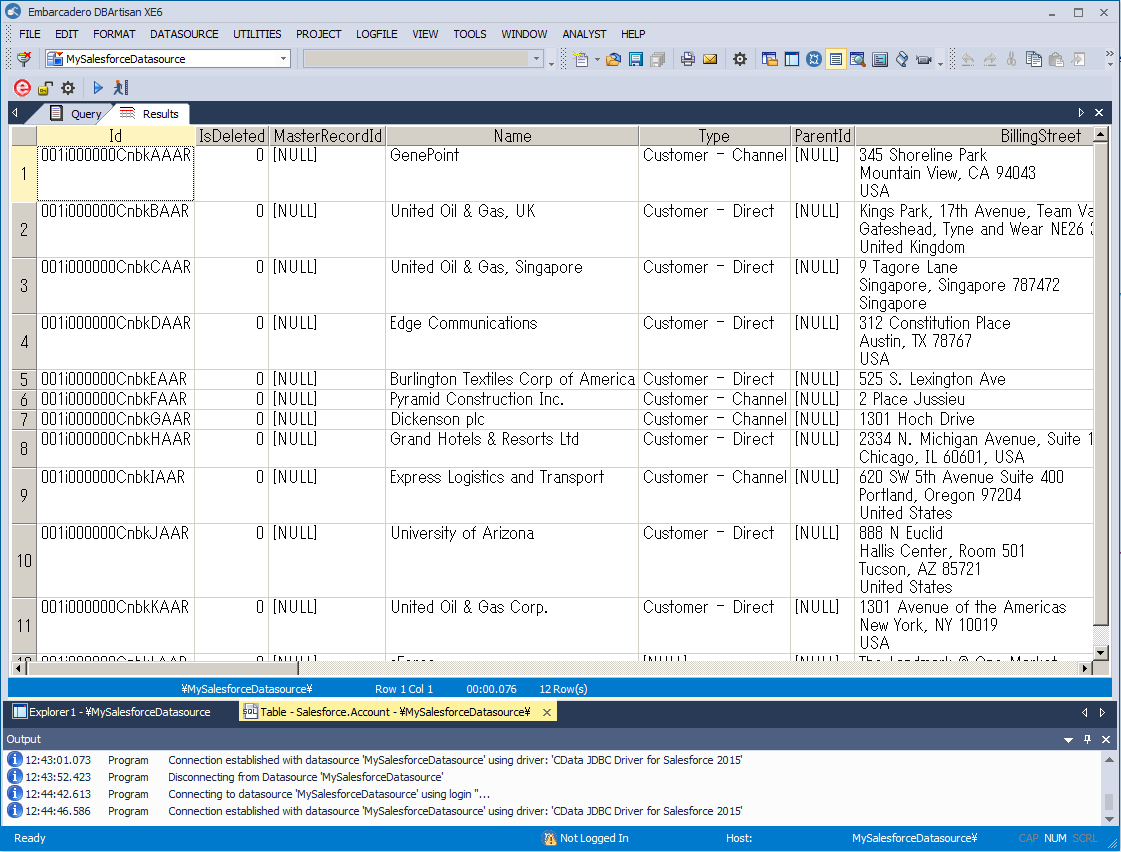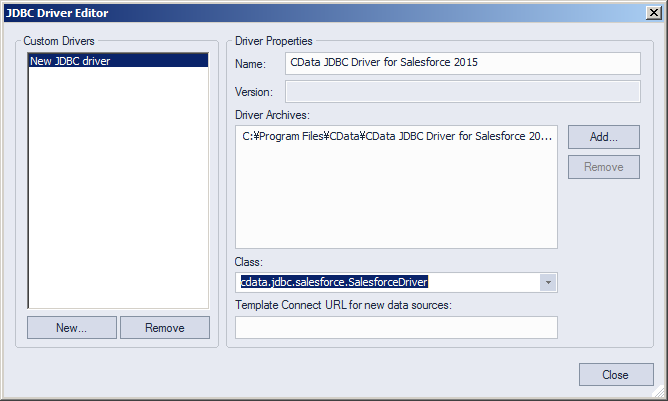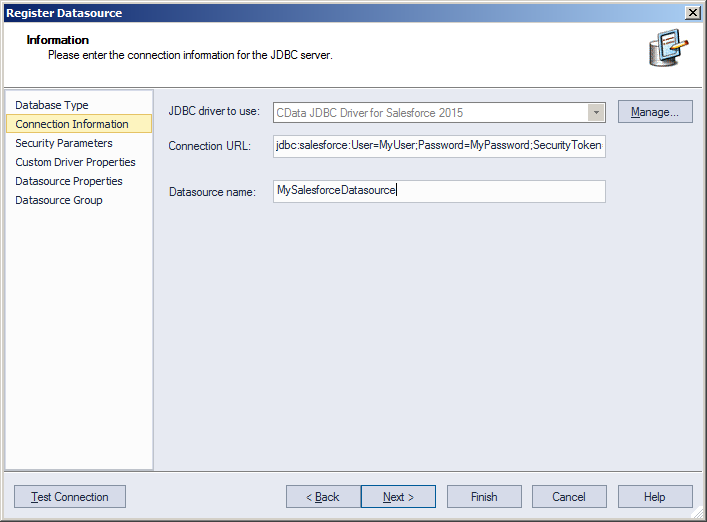Discover how a bimodal integration strategy can address the major data management challenges facing your organization today.
Get the Report →Manage Google Cloud Storage Data in DBArtisan as a JDBC Source
Use wizards in DBArtisan to create a JDBC data source for Google Cloud Storage.
The CData JDBC Driver for Google Cloud Storage seamlessly integrates Google Cloud Storage data into database management tools like DBArtisan by enabling you to access Google Cloud Storage data as a database. This article shows how to create a JDBC source for Google Cloud Storage in DBArtisan. You can then edit data visually and execute standard SQL.
Integrate Google Cloud Storage Data into DBArtisan Projects
Follow the steps below to register Google Cloud Storage data as a database instance in your project:
- In DBArtisan, click Data Source -> Register Datasource.
- Select Generic JDBC.
- Click Manage.
- In the resulting dialog, click New. Enter a name for the driver and click Add. In the resulting dialog, navigate to the driver JAR. The driver JAR is located in the lib subfolder of the installation directory.
![The JDBC driver definition in the Register Datasource wizard. (Salesforce is shown.)]()
-
In the Connection URL box, enter credentials and other required connection properties in the JDBC URL.
Authenticate with a User Account
You can connect without setting any connection properties for your user credentials. After setting InitiateOAuth to GETANDREFRESH, you are ready to connect.
When you connect, the Google Cloud Storage OAuth endpoint opens in your default browser. Log in and grant permissions, then the OAuth process completes
Authenticate with a Service Account
Service accounts have silent authentication, without user authentication in the browser. You can also use a service account to delegate enterprise-wide access scopes.
You need to create an OAuth application in this flow. See the Help documentation for more information. After setting the following connection properties, you are ready to connect:
- InitiateOAuth: Set this to GETANDREFRESH.
- OAuthJWTCertType: Set this to "PFXFILE".
- OAuthJWTCert: Set this to the path to the .p12 file you generated.
- OAuthJWTCertPassword: Set this to the password of the .p12 file.
- OAuthJWTCertSubject: Set this to "*" to pick the first certificate in the certificate store.
- OAuthJWTIssuer: In the service accounts section, click Manage Service Accounts and set this field to the email address displayed in the service account Id field.
- OAuthJWTSubject: Set this to your enterprise Id if your subject type is set to "enterprise" or your app user Id if your subject type is set to "user".
- ProjectId: Set this to the Id of the project you want to connect to.
The OAuth flow for a service account then completes.
Built-in Connection String Designer
For assistance in constructing the JDBC URL, use the connection string designer built into the Google Cloud Storage JDBC Driver. Either double-click the JAR file or execute the jar file from the command-line.
java -jar cdata.jdbc.googlecloudstorage.jarFill in the connection properties and copy the connection string to the clipboard.
![Required JDBC connection properties in the Register Datasource wizard. (Salesforce is shown.)]()
Below is a typical connection string:
jdbc:googlecloudstorage:ProjectId='project1';InitiateOAuth=GETANDREFRESH - Finish the wizard to connect to Google Cloud Storage data. Google Cloud Storage entities are displayed in the Datasource Explorer.
You can now work with Google Cloud Storage data as you work with any other database. See the driver help documentation for more information on the queries supported by the Google Cloud Storage API.









